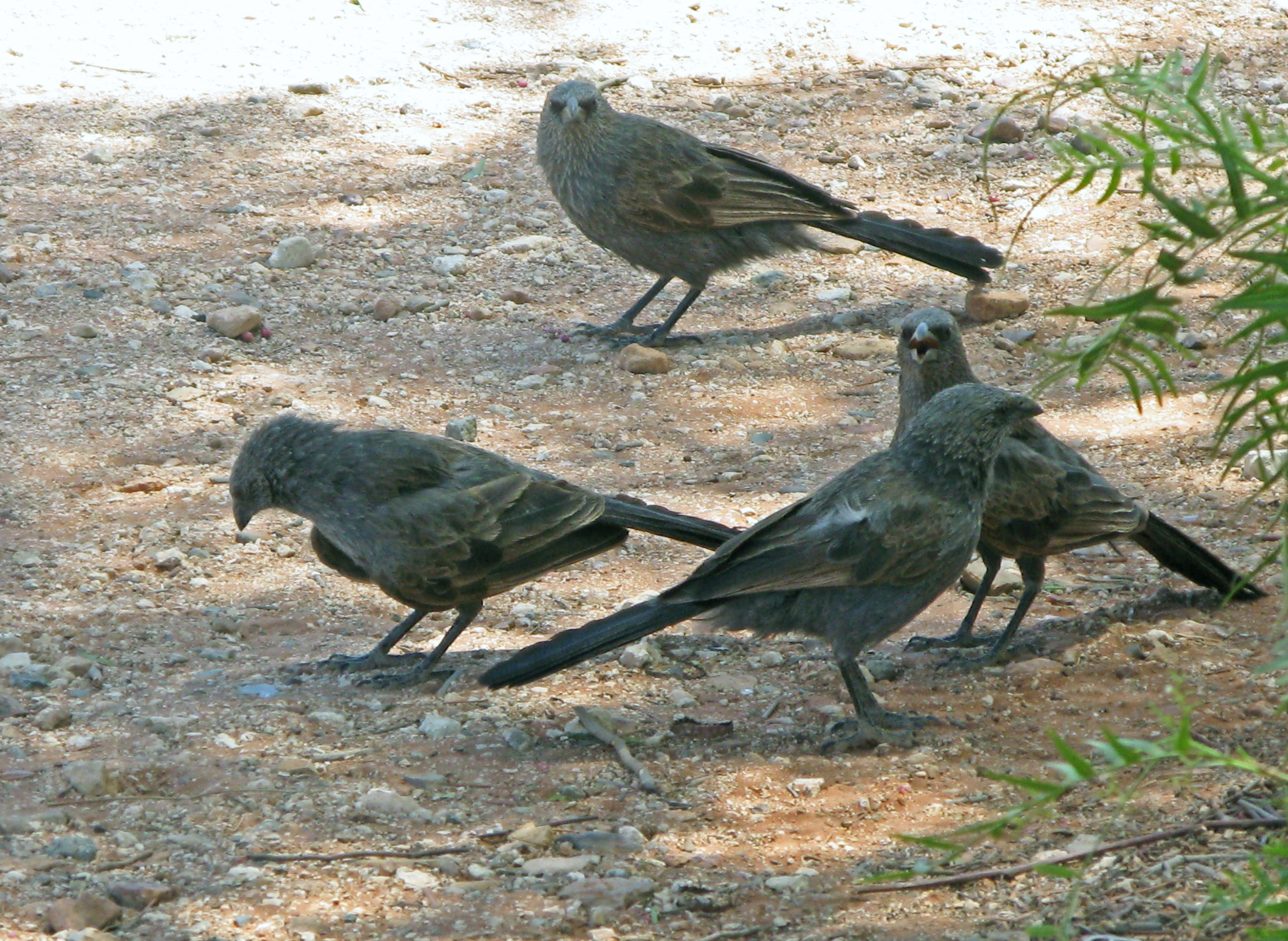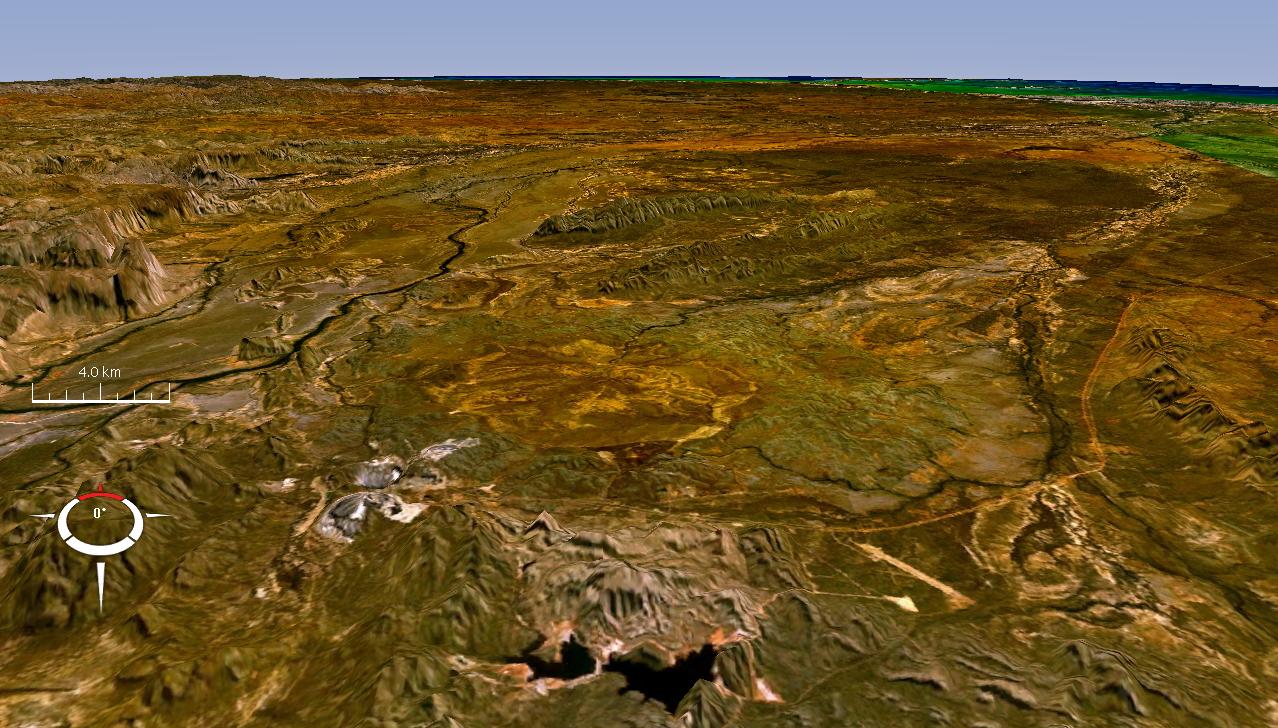|
Apostlebird
The apostlebird (''Struthidea cinerea''), also known as the grey jumper, lousy jack or happy family, is a quick-moving, gray or black bird about 33 cm (13 in) long. It is a native to Australia where it roams woodlands, eating insects and seeds at, or near, ground level. Apostlebirds often travel in groups of about 12; for this reason, they were named after the 12 Biblical apostles. Taxonomy Originally described by ornithologist John Gould in 1837, its specific epithet is Latin ''cinerea'' "grey". In its own genus ''Struthidea'', it is placed in the family known as the mud-nest builders or Corcoracidae, written as Grallinidae in older books before the removal of the genus ''Grallina'' to the monarch family. It is one of two remaining species, with the white-winged chough (''Corcorax melanorhamphos''), which differs in appearance but exhibits many behavioural similarities. The mudnest builder family Corcoracidae itself is now placed in a narrower "core corvine" group, w ... [...More Info...] [...Related Items...] OR: [Wikipedia] [Google] [Baidu] [Amazon] |
Corcoracidae
Corcoracidae is a family of passerine birds known as the Australian mudnesters. The family has sometimes been called Struthideidae in the past; however, despite Struthideidae being an older name than Corcoracidae, the latter name takes precedence. It contains just two species in two genera, the white-winged chough (''Corcorax melanorhamphos'') and the apostlebird (''Struthidea cinerea''). Both are endemic to Australia. Distribution and habitat Both the Australian mudnesters are found in open habitat in eastern Australia, mostly open eucalypt woodlands and some forest that lacks a closed canopy. The apostlebird is more tolerant of arid habitats and is found in arid woodland and shrublands. Both species are tolerant of human modified habitats and will occupy farmlands and suburban areas, and even parks and gardens. Description The two mudnesters are medium-sized passerines, the apostlebird being smaller at around in length and the larger white-winged chough averaging . Their morph ... [...More Info...] [...Related Items...] OR: [Wikipedia] [Google] [Baidu] [Amazon] |
Endemic Birds Of Australia
This article is one of a series providing information about endemic (ecology), endemism among birds in the world's various zoogeographic zones. For an overview of this subject see Endemism in birds. Patterns of endemism Family-level endemism is prominent in Australia. The Australasian realm, Australasian biogeographic region has the highest number of endemic family (biology), families of any zoogeographic region except the Neotropics, and many of these families are endemic to Australia itself — the country therefore stakes a strong claim to be the world's greatest hotspot of bird endemism. Australian endemic and near-endemic families The Australian endemic families are: * Emu (Dromaiidae), a well-known monotypic family; the emu is found in rural areas throughout the continent * Plains-wanderer (Pedionomidae), a monotypic family; plains-wanderer is restricted to arid inland areas in the southeast of Australia * Lyrebirds (Menuridae), two forest-dwelling species of southea ... [...More Info...] [...Related Items...] OR: [Wikipedia] [Google] [Baidu] [Amazon] |
Reader's Digest Complete Book Of Australian Birds
The ''Reader's Digest Complete Book of Australian Birds'' is a book first published by Reader's Digest Services Pty Ltd of Sydney, Australia in 1976 and reprinted several times, with a completely revised edition issued in 1986. Description The book is small folio in size, 330 mm in height by 230 mm in width. It describes and illustrates bird species recorded from Australia, mostly at one species per page, using photographs sourced from the National Photographic Index of Australian Wildlife. The distinctive, mainly blue, cover features a photograph of a pair of olive-backed sunbirds. Before the individual species accounts which fill most of the book there is a foreword by Alec H. Chisholm and sections on “Where birds live” and “Naming and identifying birds”, while following the species accounts are chapters on “Rare visitors, escaped captives and unsuccessful introductions”, “Classification by order and family”, “Behaviour that distinguishes specie ... [...More Info...] [...Related Items...] OR: [Wikipedia] [Google] [Baidu] [Amazon] |
Flora And Fauna Guarantee Act (1988)
The ''Flora and Fauna Guarantee Act 1988'', also known as the ''FFG Act'', is an act of the Victorian Parliament designed to protect species, genetic material and habitats, to prevent extinction and allow maximum genetic diversity within the Australian state of Victoria for perpetuity. It was the first Australian legislation to deal with such issues. It enables the listing of threatened species and communities and threats to native species, and the declaration of critical habitat necessary for the survival of native plants and animals. After an extensive review of the Act in 2019, the ''Flora and Fauna Guarantee Amendment Act 2019'' modernised and strengthened the provisions of the Act on 1 June 2020. Enforcement of the ''FFG Act'' is overseen by the Office of the Conservation Regulator (OCR). Description The ''Flora and Fauna Guarantee Act 1988'' helps protect and manage the biodiversity of the state of Victoria. It aims to conserve all of Victoria’s native plants and anim ... [...More Info...] [...Related Items...] OR: [Wikipedia] [Google] [Baidu] [Amazon] |
Environment Protection And Biodiversity Conservation Act 1999
The ''Environment Protection and Biodiversity Conservation Act 1999'' (Cth) is an Act of the Parliament of Australia that provides a framework for protection of the Australian environment, including its biodiversity and its natural and culturally significant places. Enacted on 16 July 2000, it established a range of processes to help protect and promote the recovery of threatened species and ecological communities, and preserve significant places from decline. The Act is administered by the Department of Climate Change, Energy, the Environment and Water. Lists of threatened species are drawn up under the Act, and these lists, the primary reference to threatened species in Australia, are available online through the Species Profile and Threats Database (SPRAT). As an Act of the Australian Parliament, it relies for its constitutional validity upon the legislative powers of the Parliament granted by the Australian Constitution, and key provisions of the Act are largely ba ... [...More Info...] [...Related Items...] OR: [Wikipedia] [Google] [Baidu] [Amazon] |
Helpers At The Nest
Helpers at the nest is a term used in behavioural ecology and evolutionary biology to describe a social structure in which juveniles and sexually mature adolescents of either one or both sexes remain in association with their parents and help them raise subsequent broods or litters, instead of dispersing and beginning to reproduce themselves. This phenomenon was first studied in birds where it occurs most frequently, but it is also known in animals from many different groups including mammals and insects. It is a simple form of co-operative breeding. The effects of helpers usually amount to a net benefit, however, benefits are not uniformly distributed by all helpers nor across all species that exhibit this behaviour. There are multiple proposed explanations for the behaviour, but its variability and broad taxonomic occurrences result in simultaneously plausible theories.Dickinson, J. L.; Hatchwell, B. J. (2004) "Fitness consequences of helping" in ''Ecology and evolution of coo ... [...More Info...] [...Related Items...] OR: [Wikipedia] [Google] [Baidu] [Amazon] |
Casuarina
''Casuarina'', also known as she-oak, Australian pine and native pine, is a genus of flowering plants in the family Casuarinaceae, and is native to Australia, the Indian subcontinent, Southeast Asia, islands of the western Pacific Ocean, and eastern Africa. Plants in the genus ''Casuarina'' are monoecious or dioecious trees with green, pendulous, photosynthetic branchlets, the leaves reduced to small scales arranged in whorls around the branchlets, the male and female flowers arranged in separate spikes, the fruit a cone containing grey or yellowish-brown winged seeds. Description Plants in the genus ''Casuarina'' are dioecious trees (apart from ''C. equisetifolia'' that is monoecious), with fissured or scaly greyish-brown to black bark. They have soft, pendulous, green, photosynthetic branchlets, the leaves reduced to scale-like leaves arranged in whorls of 5 to 20 around the branchlets. The branchlets are segmented at each whorl with deep furrows that conceal the stomates. ... [...More Info...] [...Related Items...] OR: [Wikipedia] [Google] [Baidu] [Amazon] |
Callitris
''Callitris'' is a genus of coniferous trees in the Cupressaceae (cypress family). There are 16 recognized species in the genus, of which 13 are native to Australia and the other three (''C. neocaledonica, C. sulcata'' and ''C. pancheri'') native to New Caledonia. Traditionally, the most widely used common name is cypress-pine, a name shared by some species of the closely related genus ''Actinostrobus''.Eckenwalder, J.E. 2009. ''Conifers of the World: The Complete Reference''. Timber Press. p. 122-124 Description They are small to medium-sized trees or large shrubs, reaching tall (to in ''Callitris macleayana, C. macleayana''). The leaf, leaves are evergreen and scale-like, but young seedlings have needle-like leaves; in ''Callitris macleayana, C. macleayana'', needle-like leaves are found mixed with scale leaves throughout the tree's life. The scales are arranged in six rows along the twigs, in alternating whorls of three (often in whorls of four in ' ... [...More Info...] [...Related Items...] OR: [Wikipedia] [Google] [Baidu] [Amazon] |
Gulf Country
The Gulf Country or North West Queensland is the region of woodland and savanna grassland surrounding the Gulf of Carpentaria in north western Queensland and eastern Northern Territory on the north coast of Australia. The region is also called the Gulf Savannah. The Gulf Country is crossed by the Savannah Way highway. The flat, savannah land has a dry season and a monsoon, containing the largest areas of native grassland in Australia. It is used for raising cattle and mining. It contains large reserves of zinc, lead and silver. The area is home to a number of endangered species and is crossed by a number of major rivers. The first known European explorer of the region was Willem Janszoon. Location and description The Gulf Country is a block of dry savanna between the wetter areas of Arnhem Land and the Top End of the Northern territory to the west and the Cape York Peninsula of Far North Queensland to the east, while to the south and east lie upland plains of Mitchell gr ... [...More Info...] [...Related Items...] OR: [Wikipedia] [Google] [Baidu] [Amazon] |



